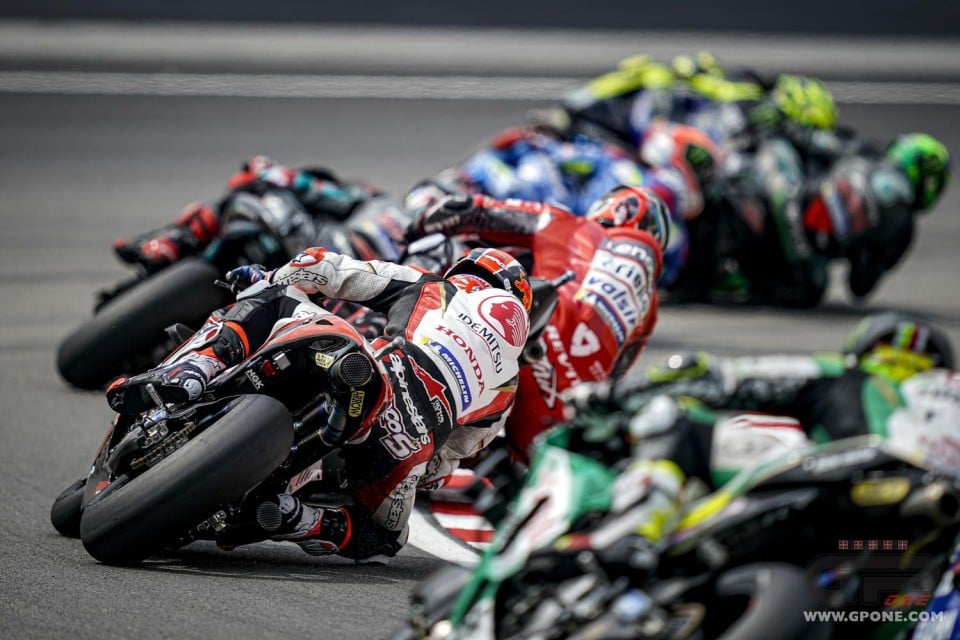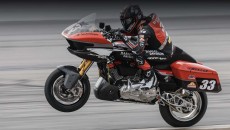We had anticipated this, and it was confirmed today by an official Dorna release. Technical development for the MotoGP, Moto2, and also Moto3 will not be happening throughout 2020 and 2021. Engine and aerodynamics specifications will, therefore, remain the same for the top class. This is specified in the following letter:
MOTOGP CLASS
All constructors, those that currently do not use concessions and also all others, must approve a specific engine for the entire season. Constructors can approve a different specification for independent teams. Until now, those that used concessions did not have this limitation and could change specifications during the year.
In addition, constructors have been granted the approval of two aerodynamic specification drawings for each rider per season. The one that was already approved for Qatar, plus another one.
The GP Commission approved the following changes with immediate effect:
2020 SEASON:
There will be no updates for parts already approved during the 2020 season. This applies to all constructors, both those with and without concessions.
2021 SEASON:
Constructors that use concessions, as well as all others, must start the 2021 season with what was approved in March 2020. Subsequently, for the rest of the 2021 season, the normal updating rules will apply, as per the regulations in force, which means no engine development for constructors without concessions and only one update in aerodynamics for each rider for every constructor.
For the first race of 2021, riders will be able to choose between an engine or an aerodynamic configuration that the manufacturer previously approved in 2020.
MOTO2 CLASS
The organizer will continue to supply all riders in the Moto2 class with Triumph 765 cc engines, which are the same for everyone. Until now, the limit on development was reserved for a single aerodynamic update for each constructor present. The GPC has approved the following changes:
AERODYNAMICS:
The current aerodynamics already approved by constructors in the 2020 Qatar GP, in addition to that approved in 2019, will not be updated until the end of the 2021 season. No further updates will be allowed.
FRAME AND SWINGARM:
Each constructor can use any frame or swingarm implemented this year or previously approved. The designs of these components will be frozen throughout the 2021 season, with no further changes allowed.
Each team will then be required to declare a maximum of two frame and swingarm specifications from their frame manufacturers approval list. Any rider called as a replacement will be required to implement the specifications used up to that moment by the rider being replaced.
MOTO3 CLASS
Currently, in the Moto3 class, constructors must supply all their riders with the same complete motorcycle. Until now, riders have been able to choose two transmission gears per season. The GPC approved the following changes with immediate effect:
The specifications of the bike, as declared by each constructor at the Qatar GP 2020, will be frozen for the 2020 and the 2021 seasons, which means that no further updates will be allowed on all the listed performance components, fram , swingarm, engine, aerodynamic body, gearbox, or throttle.
The GPC has also approved the number of engines that each rider can use in relation to possible revised calendars for both 2020 and 2021. These will be published as part of the regulation revision.
MOTO2 AND MOTO3
Devices that change the height of the bike and help the rider during the starting phase of the Grand Prix are prohibited. These are currently allowed in the MotoGP. Due to the possibly high development costs that these devices could require, they believed that this technology does not fall within the ethics of the Moto3 and Moto2 classes, designed to be low-cost championships. Therefore, this technology is prohibited in both categories, with immediate effect. Any type of device that modifies or adjusts the riding height of the bike while it is in motion will be prohibited.









